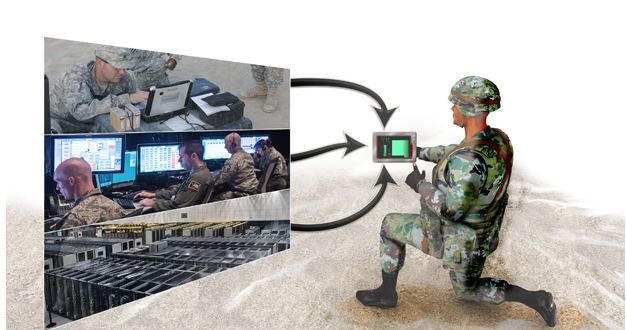The U.S. Defense Advanced Research Projects Agency (DARPA) wants to vastly simplify secure data sharing among U.S. and coalition troops across mobile tactical networks with the launch of a new program called SHARE.
The usual process in which U.S. troops share information requires an end-to-end connection to secure servers using a dedicated digital "pipe" approved for the specific security level of data being transmitted.
If that tactical network is overloaded, or if a glitch causes a break in the digital chain, the message or data is typically lost and the process must be repeated until a connection is completed. This hinders the mission in fast-moving tactical situations.
Computers and infrastructure needed to manage multiple levels of U.S. classified and coalition information, however, are too bulky for tactical use in the field. They can also take months or longer to deploy.
To overcome this challenge, DARPA recently announced its Secure Handhelds on Assured Resilient networks at the tactical Edge (SHARE) program.
SHARE aims to create a system where information at multiple levels of security classification can be processed on a single handheld device using a resilient secure network that links devices without needing to route traffic through secure data centers.
This capability would be able to operate over existing commercial and military networks while maintaining the security of sensitive information and safety of operations.
"Troops forward deployed today have to have multiple laptops or devices that are approved to communicate at various levels of classification," said Joe Evans, DARPA program manager.
"The vision of SHARE is to develop software that moves the multilevel security management function from a handful of data centers down to trusted, handheld devices on the tactical edge."
The end goal of the program is to demonstrate secure exchange of information at multiple levels of classification over unsecured military and commercial networks (e.g., Wi-Fi and cellular) using a heterogeneous mix of devices (from tactical radios to laptops to handheld devices).
A Proposers Day is scheduled for Jan. 31, 2017, in McLean, Virginia.



























